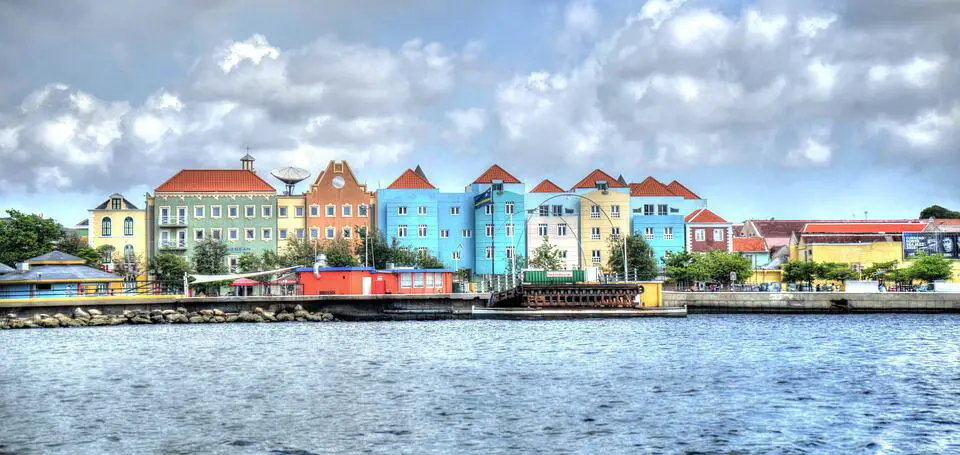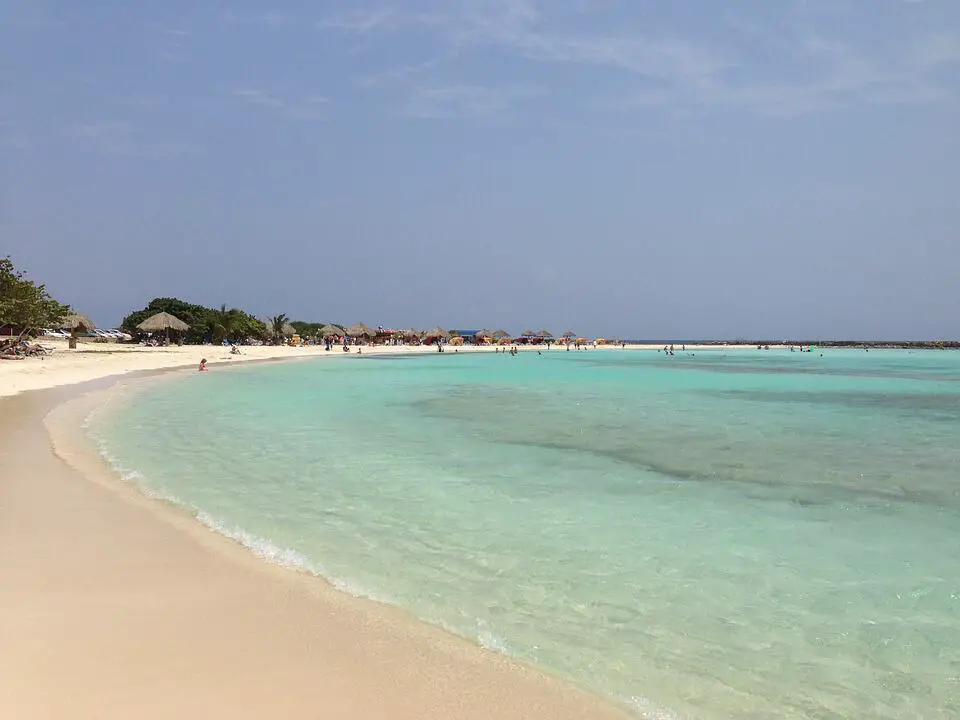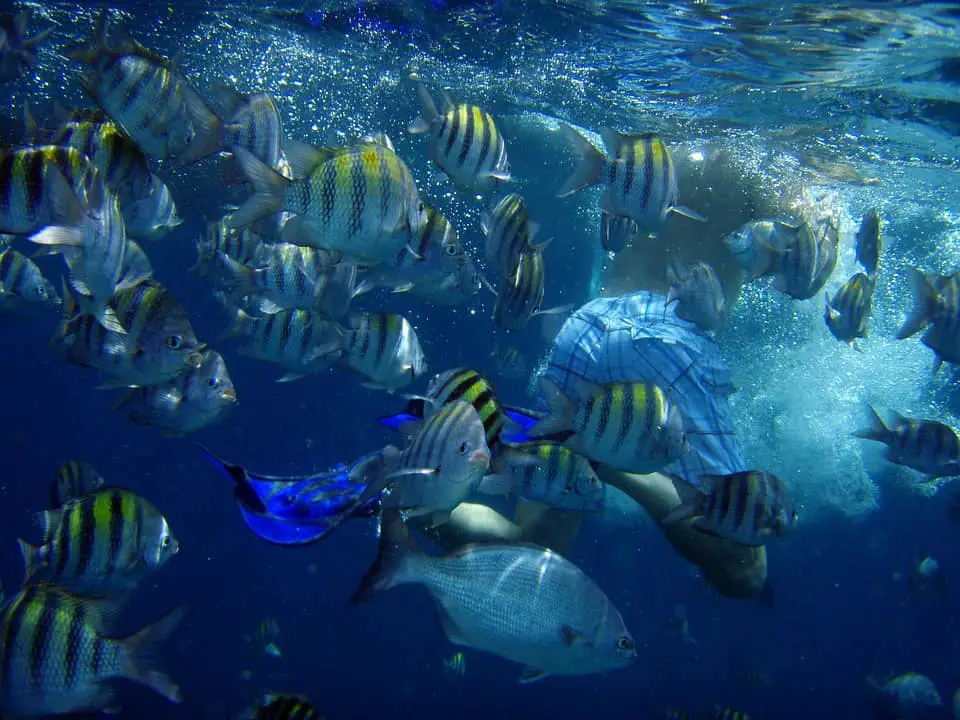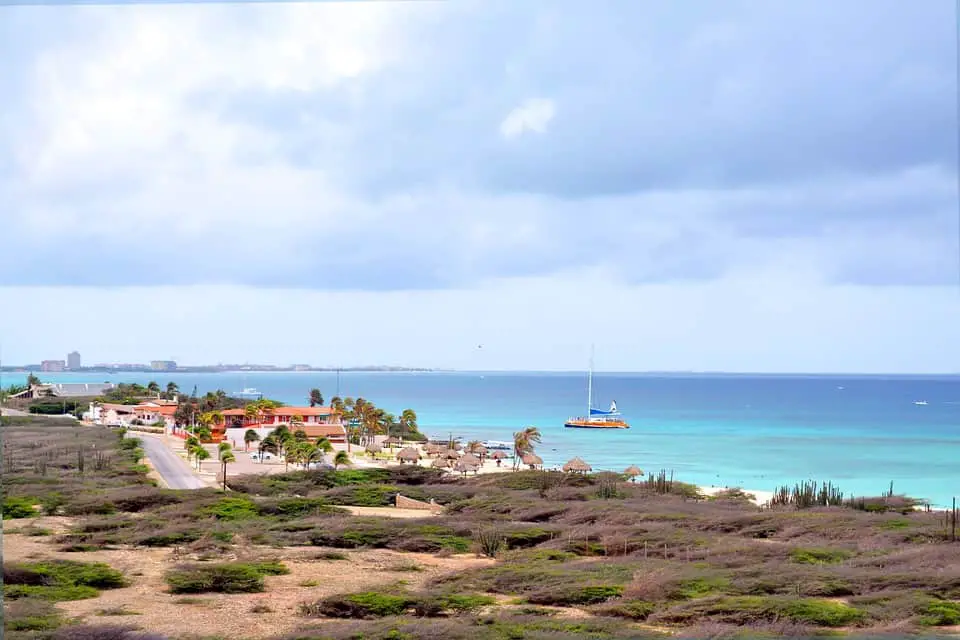Before going to Aruba I wasn’t sure what to expect and, honestly, there’s not much information about the island over the internet. So I decided to help those curious people -like me- who want to know what Aruba looks like and what to expect in this beautiful island.
Differently than other Caribbean countries, Aruba is more lush and tropical -which means it is more arid and cactussy. However, it has incredible beaches and way better infrastructure than many other islands. People are very welcoming and you don’t have to worry about language as most of them speak English, Spanish, Dutch, and Papiamento.
This island is more than just beaches and outstanding service. Honestly, there is so much to say about Aruba, I’m just going to answer some frequently asked questions people ask themselves over the web to open a little window that will answer that little question in your head: What does Aruba look like?
Architecture in Aruba – More than just buildings
An important part of the country is based on its rich historical architecture. The island’s architecture mixes the colonial architecture, modern architecture and incredible landscapes. It perfectly represents the collision and mixing of all the societies that have been on the island in a single place.
Those who are interested in pre-colonial times can still go see houses made of Caliche. This is a calcium substance located in the southern hills of the country. As this material forms a strong crust when it is treated, indigenous people used it to build their homes and settle in the island.
However, you will most probably notice the old buildings of the 18th century. During the times of colonization, the Kingdom of the Netherlands noted that Aruba was a strategic place. Even though its arid landscapes were not as helpful for farming, it did not only have an impressive military positioning but it was also perfect to store important things from the other islands.
That’s why they decided to establish and, over time, make some buildings that were very important at the time, like chapels and churches, mills, piers, forts, museums and, of course, a city hall. Today, they remain as a sign of their history, culture and it is a way to show tourists a little about their society.
This doesn’t mean that cement and concrete are not part of their architecture. There are many recent buildings but it is easy to notice the contrast between both designing styles and even more when they are near a beautiful natural place.

The climate in Aruba – A sunny paradise
Even though the island’s climate does change over the course of the year, it is important to remember that, as a tropical country, it is warm all year long -around 80 F. Temperature goes higher from May to October, reaching the top of 93 at the end of August, and lowers from December to March, being the coldest day 75 in January.
If you are from way up north or down south, it is recommended that you come during the coldest days to avoid getting insulated. The problem with the heat is that the wind blows constantly and the air can be a little muggy, which tends to be quite unpleasant for people who are not used to this tropical sun. Also, remember to bring sunblock!
The sea will also be warm enough to swim all year long. The water averages 79 during the coldest months (January to April) and 84 during the hottest ones (August to October). So don’t forget to pack your swimwear.
Many people are also concerned about hurricanes from August to October. In Aruba, you don’t have to worry much about this aspect as they are very rare in the southern edge of the belt. Even though there is still a risk of a tropical storm, the last hurricane that hit the country dates back to 2008. Checking the news before a week before getting on the plane is enough to know if there will be a hurricane risk or not.
Another important factor is the clear sky. Aruba is the Caribbean island with most sunny days a year (over 350) and the place where rains the least, barely reaching 15 inches of rainfall a year -not for nothing it is usually described as arid.
Having said all of this, probably the best time of the year to visit Aruba ranges from February to May. This is because there will be no risk of getting in hurricane risk or rainy days and the sky will be perfect to enjoy the sun and the beach.

Wildlife in Aruba – Bring your camera or you will regret it!
Certainly, the country’s nightlife is incredible and its beaches are just indescribable, but it also has much more than just the regular Caribbean ideal vacations. Going to the small but great island is an opportunity to experience firsthand the wildlife and flora of Aruba.
As the island is pretty arid, the original terrestrial wildlife is mostly related to cold-blooded animals. For example, according to local researchers, you can find at least half of all kinds of lizard species on the island. There is a wide variety of snakes, including some that empty their bowels when they are caught, as well as what they consider their home dragons, iguanas.
Even though colonial times brought goats, rabbits, and donkeys, Aruba is better known for its wide range of birds. There are around 200 species and this is the reason why lots of birders come to the island. Some of the most important ones are the tropical Mockingbird, the burrowing owl, the scarlet ibis, the yellow-headed Aruban parakeet, the black noodies, the orange trupial and a wide variety of pelicans but there are many others.
However, where Aruba shines is in marine wildlife. Being one of the tropical islands with the best climate, Scuba Diving is more than a sport. It is a lifestyle. Thanks to this incredible sport, now tourists can see lots of marine species that would have never been possible without an oxygen tank.
If you go Scuba Dive in Aruba, you’ll see stingrays, manta rays, barracuda, seahorses, moray eels and many different fish species, like angelfish, clownfish, goatfish, starfish, puffers, four-eyed butterflyfish, scorpionfish and many more. It is an experience you won’t forget.
Also, turtles are pretty special. If you come at the right time and you are lucky enough, you may not only snorkel with them, but you will see a turtle nest hatching. Take into account that it is forbidden to touch them because it is an endangered species -there’s even a special organization in charge of helping them survive and get to the ocean- but it is a fulfilling experience that is worth seeing with your own eyes.

Flora in Aruba – It’s just beautiful
Considering that Aruba’s climate is very dry and sunny with little rain, few plants can survive with such a scarce amount of water. That’s why most of the original plants and flowers are part of the cacti family.
There are three main categories you’ll see in the island: the ones that you will only find in the island, the ones that are seen in Aruba and other places and the ones that were brought to Aruba by indigenous peoples, colonizers, and other people. However, you’ll see here the most representative of the country.
- Tuna Cactus
- Lotus Flower
- Yellow Hubada
- Dornasol
- Tuturutu
- Flor di Sanger
- Plumeria
- Powder Puff Tree
- Passion Flower Bromeliad
It is also important to mention Aloe Vera. This one is very important because it is grown in large scale. Aruba is one of the main countries that export this incredibly resilient plant and it grows naturally throughout the whole country. Anywhere you go, you can see it and it is one of the islanders’ secrets to remain fresh and beautiful all year long.
Another flower that is not mentioned in the list is Wanglo. Its beautiful yellow leaves are the inspiration for the yellow stripes you see on the Aruban flag and it is not the only natural of the island but it is the only place where you will be able to see it firsthand.

Mixing in Aruba – An island that welcomes everyone
As it is a pretty small country, you’ll be able to go from one coast to the other in a single day, and you’ll probably that there are all kinds of people in the country. They are all very different but they seem to get along pretty well.
Well, it turns out that Aruba is a welcoming country in which less than 70% of the population are nationals. They are pretty used to receiving people from different nationalities (33% of their population) and they love speaking other languages.
Even though they speak Papiamento as the first language, most of them speak two languages, mainly Papiamento and Dutch, with English, Spanish, French or Portuguese as a third language. So, don’t worry about it, you’ll feel in a second home and, if you stay long enough, you may learn another language as well.
If you are looking more information about Aruba, you may be interested in Is Aruba a Country?

